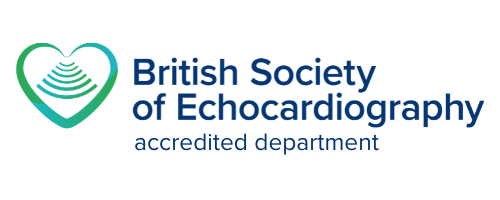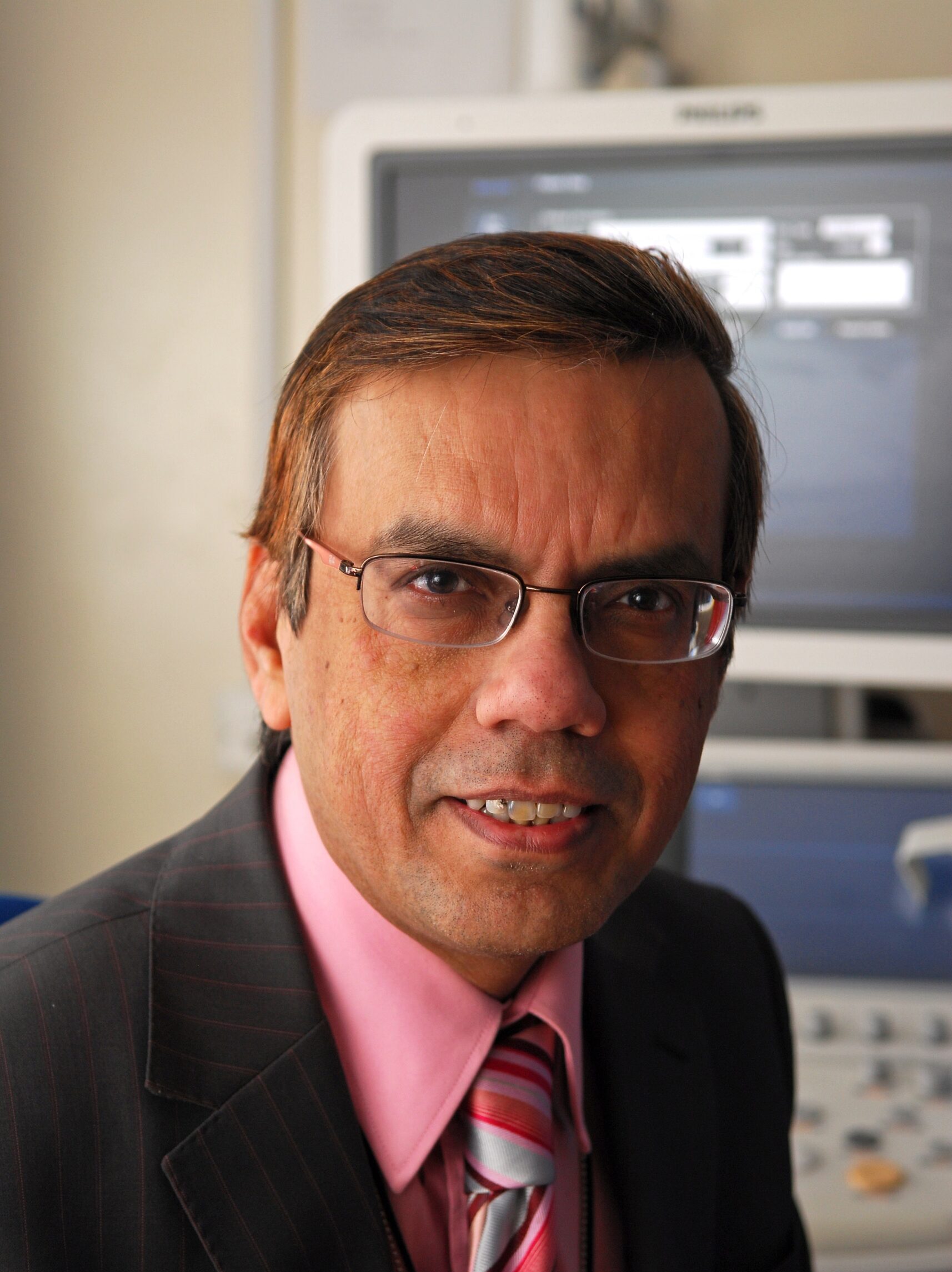What is an echocardiogram?
An echocardiogram – also known as an echo – is a scan that examines the heart and surrounding blood vessels. The test is a form of ultrasound scan, which sends out high-frequency sound waves to create echoes that are turned into moving images of the heart. An echo provides valuable diagnostic information about the structure and function of your heart that sometimes cannot be obtained through other tests.
A heart specialist, or any doctor who suspects you may have a heart problem, may refer you for an echocardiogram.
Types of echocardiograms
We offer several echocardiograms, the type of echocardiogram you are eligible for will depend on the condition or symptoms you might have. Our team can also undertake complex congenital and paediatric echocardiograms.
This is the standard type of echo and is sometimes combined with other types of echo in situations where very specific information is required. A transthoracic echo can provide information about the heart at rest. We can assess how well your heart is pumping and how well the valves are working. We can usually obtain a lot of other detailed information about how your heart functions.
Offering more detailed images than a standard echo, could be used during or after heart procedures, and to see if your heart could be producing blood clots.
There are two types of contrast echocardiograms. The first involves injecting a contrast agent (special dye) to show structures in your heart more clearly. It can also assess myocardial blood flow.
The other type involves injecting a saline solution (salty water) into your bloodstream to create bubbles. These show the direction of the blood flow and can help a doctor diagnose if you have a hole in your heart.
To help measure your blood flow’s speed and directions, checking for blood flow problems and blood pressure.
A stress echocardiogram or ‘exercise stress test’ is regarded as a more advanced scan than a standard echocardiogram. This is because the test assesses your heart and its arteries during physical activity rather than just examining your heart whilst resting. This test helps to check for issues such as coronary artery disease.
If you are unable to exercise, some medication which helps to stimulate the heart muscle and blood flow is given through an injection in your arm to simulate the effects of exercise.
Similar to a standard echocardiogram, the 3D echo provides a three-dimensional view of the heart structures, but with better detail than a standard 2-D echo test.
This provides us with more detailed information in terms of the volume and mass quantification of the heart and allows for accurate structural analysis of valves. It can also show the motion of blood within the heart using 3D datasets. As a comprehensive part of the echocardiography study.
What does an echocardiogram show?
An echocardiogram uses a small probe to emit high-frequency sound waves that produce echoes, bouncing off different parts of the body. The echoes are picked back up by the probe and converted into moving images, which can be seen on a monitor as the echo is carried out.
Echocardiograms are used to check for heart problems, such as abnormalities and defects in the heart’s chambers and valves. Doctors use echos to determine whether symptoms such as chest pain or breathing difficulty are signs of a heart condition. The test can also be used to detect congenital (inherited) heart defects during pregnancy.
The conditions and diseases that an echo can detect include:
- congenital heart disease
- valvular heart disease
- aneurysm (a bulge in the blood vessel wall)
- septal or atrial wall defects
- pericarditis
- pericardial effusion
- cardiomyopathy
- cardiac tumours
- heart failure
- coronary heart disease such as heart attack
How to prepare for an echo test
Before a standard echocardiogram, you can eat and drink as you would usually, and you won’t have to stop any medications you are taking. If you are having a transesophageal echocardiogram, your doctor will ask you to stop eating for several hours before the procedure, and you won’t be able to drive home afterwards due to the medication you will take for relaxation.
How is an echocardiogram done?
Your echocardiogram will be carried out by a sonographer in a darkened room. You’ll be asked to undress to the waist and wear a gown that is open at the front. During the procedure, you’ll lie on your left-hand side.
The procedure involves small sticky sensors (electrodes) being attached to your chest. These sensors are connected to the echo machine and allow your heartbeat to be monitored. An ultrasound probe is placed on the centre of your chest and moved to various positions, providing different angles for images of your heart to be captured. You’ll hear a ‘swishing’ noise from the echo machine during the scan. This sound is your blood flow and provides information on the blood supply to the heart. A more advanced echo, such as a stress echo, will require you to cycle on an exercise bike or walk on a treadmill so the sonographer can see how well your heart performs under stress.
An echo is a quick and painless procedure which is entirely safe. You are welcome to bring along a friend or relative if you would like someone to be with you during the scan.
How long does an echo take?
An echocardiogram typically takes anywhere from 15-60 minutes to complete, but a transesophageal echo can take up to 90 minutes.
You will be able to return home shortly after the scan is finished and can drive if you wish. Following the procedure, you’ll be able to continue with your normal activities.
Echocardiogram results
The results of your echocardiogram will be read by a cardiologist within 24 hours. You can expect to receive the results within a few days to a week of the test.
Information in your echo results may include:
- heart size changes, including damaged or weakened valves
- heart muscle damage, such as parts of your heart wall moving weakly
- pumping strength, including the percentage of blood pumped out of a filled ventricle in each heartbeat and the volume of blood pumped in one minute
- heart defects, such as abnormal connections and complex congenital defects
- valve problems, such as stenosis (the valves being too narrow for adequate blood flow) or valves being too open and leaking
If a heart treatment intervention is required as a result of the test identifying a heart condition or disease, your doctor will talk through the next steps with you.
British Society of Echocardiography accreditation
 We are proud to have been awarded the British Society of Echocardiography accreditation.
We are proud to have been awarded the British Society of Echocardiography accreditation.
This departmental accreditation is a recognised benchmark of quality and ensures high standards of clinical echocardiography are met and maintained for the benefit of patients.
Royal Brompton Hospital (including Wimpole Street Consulting Rooms and Diagnostic Centre) is one of a small number of accredited private echo units in the UK.
Locations
Our specialists are able to provide echocardiograms at the following locations:
Explore our cardiology specialists
Meet our team of renowned cardiology consultants. From cardiovascular health assessments to cutting-edge interventions, our specialists are committed to delivering personalised care designed just for you.
